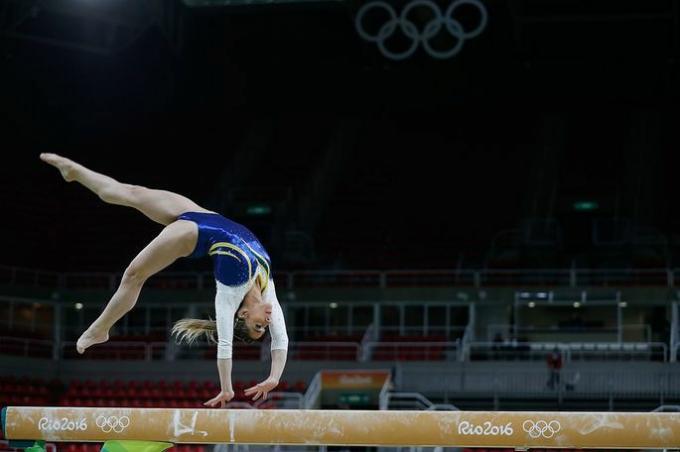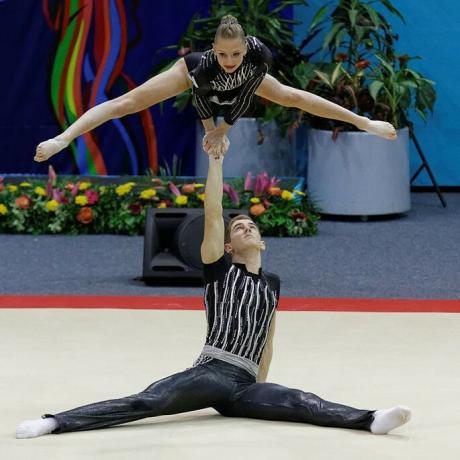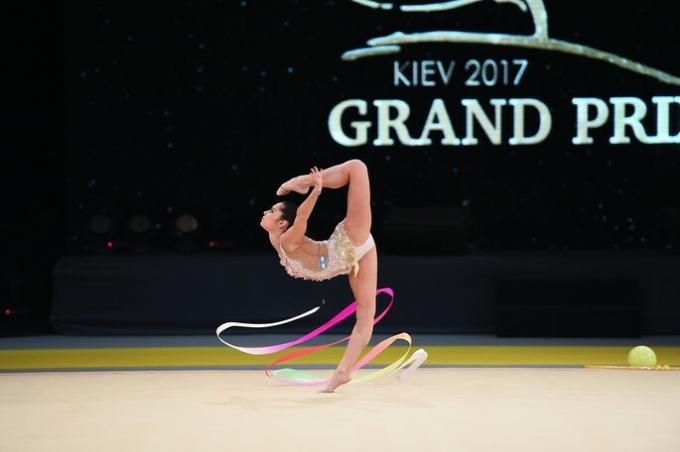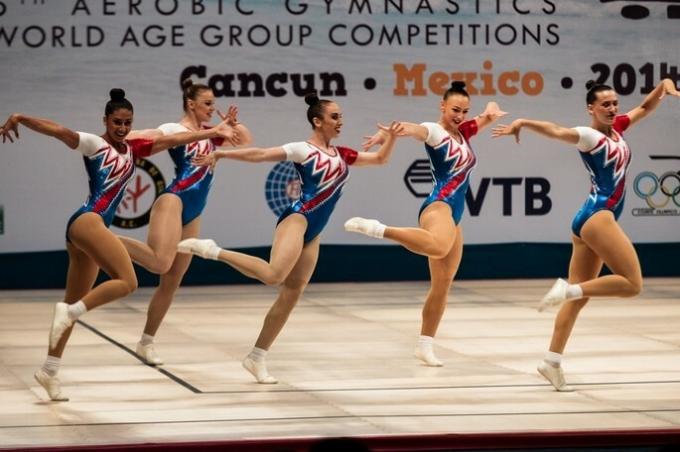Gymnastics is a sport that is divided into two types, competitive gymnastics and non-competitive ones.
The competitive ones, which enter competitions like the Olympics, in addition to working with the physical structure, through movements that they require strength, elasticity and agility, they also exercise the minds of practitioners, as their practice requires concentration and reasoning.
The non-competitive ones aim not at competitions, but at health, well-being and also the beauty of the body.
Types of gymnastics
Gymnastics can be competitive and non-competitive. This classification depends on whether the sport enters competitions or not, such as the Olympics. Among the modalities of non-competitive gymnastics, we can mention: contortionism, cerebral, labor, localized, hydrogymnastics and Gymnastics for All.
There is 5 modalities ofcompetitive gymnastics:
- acrobatic gymnastics
- aerobic gymnastics
- artistic gymnastics
- rhythmic gymnastics
- trampoline gymnastics
1. artistic gymnastics
Artistic gymnastics requires a lot of technique.
Male and female tests are different. Men perform tests with the following equipment: rings, bars, pommel horse, table and floor jump.
The women's tests, in turn, consist of asymmetric parallel exercises, table jumping, floor and balance beam.

Artistic gymnastics was influenced by the work of Johann Friedrich Ludwig Jahn, founder of the first gymnastics school. Mounted in a forest, his students used the devices created by him, as well as the resources offered by the forest.
With the development of gymnastics, there was a need to create more equipment, and consequently its practice became uniform. Characterized by the art of its movements, its practice required high-level artistic performance, from which artistic gymnastics emerged.
Read too: artistic gymnastics
2. Acrobatic gymnastics
Acrobatic gymnastics stands out for the beauty of the exercises performed on the ground, accompanied by music. It is divided into the following categories: mixed double, female double, male double, female group (composed of 3 gymnasts) and male group (composed of 4 gymnasts).

The history of acrobatic gymnastics began hundreds of years ago, when in sacred dances and festivities practiced in Egypt, among other countries, it was possible to observe acrobatic movements.
In Europe, the activity was in charge of the acrobats, and their popularity was due to the circus.
It is interesting to note that, in the Contemporary Age, the practice of acrobatics was used in the training of aviators and paratroopers.
The first world championship in acrobatic gymnastics was held in 1974.
Learn more aboutAcrobatic gymnastics.
3. Trampoline gymnastics
Trampoline gymnastics consists of acrobatic jumps on a trampoline. This modality can be played in the following events: double mini-trampoline, individual trampoline, synchronized trampoline and tumbling.

It is possible that trampoline gymnastics appeared in French shows, whose presentations were made using a device used for jumping.
This device gave rise to a portable trampoline, and between the 40s and 50s, the three-time champion of acrobatic exercises on the ground industrialized the trampoline and started to promote the new modality.
The trampoline became part of the training in the US Armed Forces. In 1953 the first international competition of the modality was held, however, trampoline gymnastics only entered the Olympics in 2000.
4. Rhythmic gymnastics
With principles in modern gymnastics, the base of this modality is the movements.
Rhythmic gymnastics is only practiced by women, who make this modality a true dance spectacle, as the gymnasts move throughout the entire performance.
The devices used in rhythmic gymnastics are: bow, ball, rope, ribbon and maces.

Rhythmic gymnastics began as competitive gymnastics in 1948 and has had various names over the years. It was only in 1998 that the FIG - International Gymnastics Federation started to call it Rhythmic Gymnastics.
Learn more aboutRhythmic gymnastics.
5. aerobic gymnastics
Aerobic gymnastics is a modality in which gymnasts perform very difficult aerobic movements, which consist of interpretation of the music that accompanies the exercise, characterized by the fast pace, such as those used in the gyms.

Initiated in the United States of America (USA), the modality emerged as a result of studies that proved that the aerobics weight loss and brought cardiovascular benefits through their dance movements, in tune with the music used.
History and origin of gymnastics
Gymnastics dates back to Ancient Greece, because the Greeks were in the habit of practicing various exercises, as a way of worshiping the body and as military preparation.
The word gymnastics has a Greek origin, and its meaning stems from its practice among the Greeks. Thus, gymnadzein, “exercise with the naked body”, translates the way the Greeks exercised without clothes. However, the word gymnadzein is translated as “train”.
The first gymnastics school
In the Modern Era, gymnastics was strongly promoted by the Germans. In 1811, with the aim of giving physical training to young people, the first outdoor gymnastics school was founded by the German Johann Friedrich Ludwig Jahn (1778-1852).
Gymnastic blocking and the spread of gymnastics
After the German kingdom of Prussia was defeated by France at the Battle of Jena in 1806, jahn, who became known as the “father of Olympic gymnastics”, began to encourage young people to train so that they would be able to defend their homeland in battle.
the attitude of jahn was considered revolutionary and, because of that, he was arrested and his practice became banned in Germany between 1820 and 1842, which became known as the “Block Gymnastic". It was from there, then, that gymnasts began to spread gymnastics in other countries.
Years later, Jahn's achievements were recognized. The Father of gymnastics received a high German distinction and gymnastics was able to spread freely throughout Germany, making great advances in the world.
Gymnastics Federation Foundation
The Committee of European Gymnastics Federations (now FIG - International Gymnastics Federation) was founded by Nicolas Cuperus on July 23, 1881, and has since gained adherents.
However, Cupérus was against sports gymnastics and it was only because of the effort of Charles Gazalet, president of the Union of Societies of Gymnasium of France, that gymnastics has effectively come to be considered a competitive sport.
And so, in 1903, the 1st International Gymnastics Tournament for men took place. Women had the opportunity to participate in the event only in 1934.
Gymnastics in Brazil
In Brazil, Olympic gymnastics arrived in 1824, brought by the Germans who colonized Rio Grande Sul. On November 16, 1858, the Joinville Gymnastics Society was founded.
Brazil's participation in international championships began in 1951, when the 1st Pan American Sports Games were held, and in 1979 the Brazilian Gymnastics Confederation was created.
Between 1978 and 2008, Brazil won 43 medals in gymnastics, 38 in Pan-American games and 5 in world championships. Between 2009 and 2019, this number increases to 51 medals, 4 of which won at the Olympic Games, 40 at the Pan American Games and 7 at the World Championships.
Read too: Labor gymnastics

